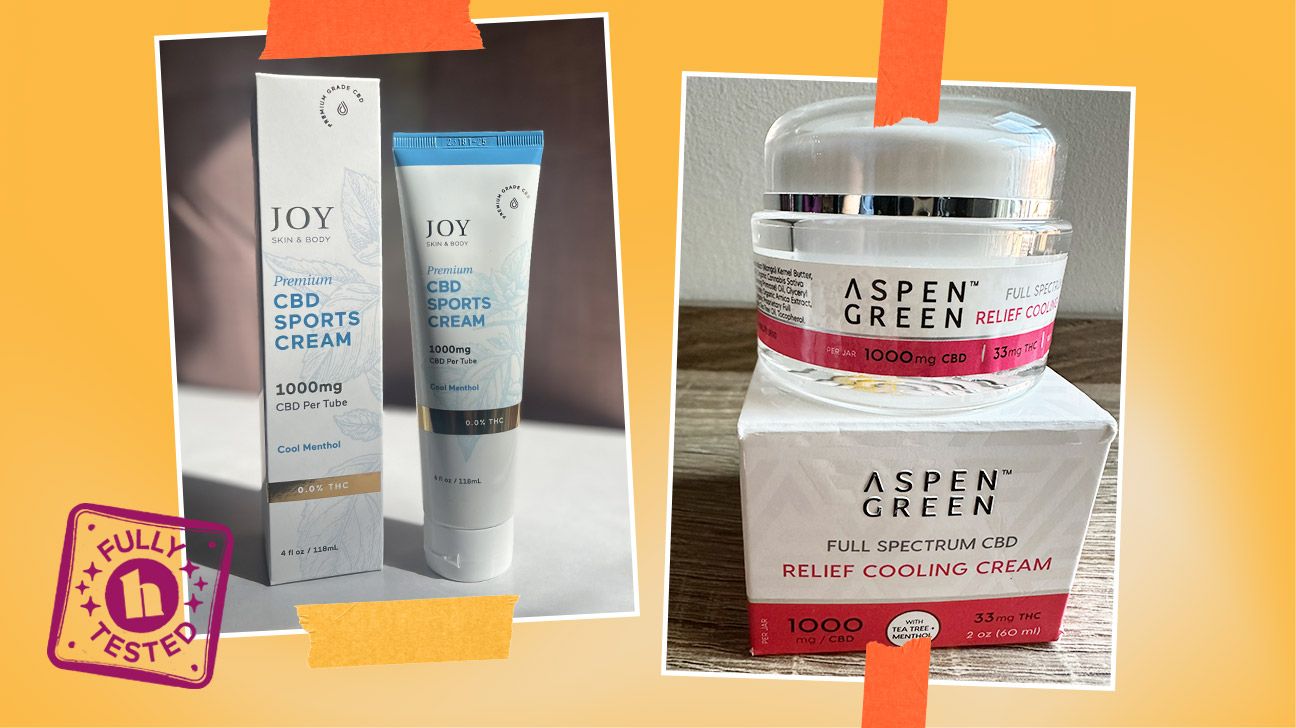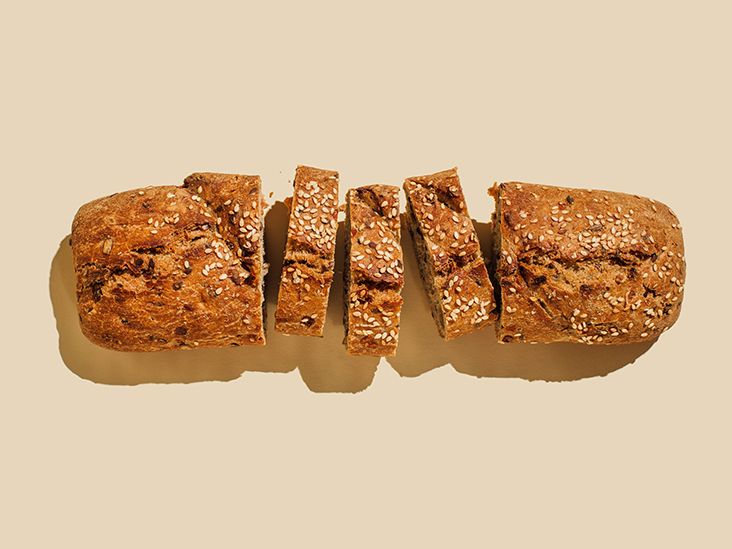Key takeaways
- CBD creams can be effective for temporary pain relief. However, more research is needed overall.
- Our testers found temporary relief with some CBD pain creams, but they worked best when coupled with other pain relief remedies.
- We prefer Joy Organics for moderate muscle pain and soreness, and Aspen Green for extra strength scenarios.
The CBD creams we’ve found to be most effective for pain tend to have other ingredients that create a cooling sensation for pain relief. It’s hard to say which ingredient is offering the bulk of the pain relief.
That said, initial research has found that
But how can you tell which CBD creams are the real deal? We’ve evaluated over 100 CBD topicals and tested more than 20 that passed initial vetting. These are our top three picks for supporting your pain relief regimen.
We selected the CBD creams on this list based on criteria that strongly indicate safety, quality, and transparency. Once they pass our initial vetting, we test them to see how they stand up against our team’s mild aches and chronic pains.
Additionally, our team has tested more than 20 CBD creams and thoroughly documented how the products affected pain management.
Our Medical Standards and Insights team has carefully researched and vetted over 11,000 products and services. We fact-check health claims, evaluate ingredients, and look into each brand’s reputation before sharing products and services on Healthline.
To choose the products on this page, we considered all the CBD lotions, creams, and balms that passed our vetting process. Then, we personally tested some of them to narrow down our list even further. Read more about how we test CBD products.
Although many people use it as a natural pain management tool, there is not enough research that looks at whether CBD offers effective pain relief. However, so far, there’s some evidence that topical CBD products, like creams, may help with a variety of pain sensations, including:
- Arthritis-related pain: A
2015 study in ratsTrusted Source suggested that topical CBD may help with arthritis-related pain and swelling. More recently, an anonymous, questionnaire-based2022 studyTrusted Source suggested that CBD use is linked with a perceived decrease in arthritis symptoms, especially joint pain. Additionally, a2023 study in miceTrusted Source suggested that cannabinoids like CBD and cannabichromene may help reduce inflammation, a common arthritis symptom. - Nerve pain: A small 2020 study examined the effects of topical CBD oils on pain. Many participants, all of whom had nerve damage, reported experiencing reduced pain levels. They described a dip in sharp, intense, cold, and itchy pain sensations.
- Jaw pain: A
small 2019 studyTrusted Source looked into how topical CBD may provide relief from a specific kind of facial pain that mainly affects the jaw. The researchers found that people who applied topical CBD about two times per day experienced much less pain after 2 weeks.
Another 2020 study found that some people in palliative care use THC or CBD regularly and that topical products, in particular, help reduce pain.
Pros
- Helps target pain in specific areas: While edibles provide full-body effects, topicals, such as creams, can be applied directly to trouble areas.
- Works quickly: Because topicals don’t pass through your stomach, they don’t get broken down like edibles do. This means they tend to work more quickly than gummies or capsules.
Cons
- Less potent than ingestibles: You may feel the effects of topicals sooner than those of ingestibles, but most creams and lotions tend to be less potent.
- Difficult to dose: Oils and ingestibles, such as gummies and capsules, are carefully formulated to ensure that you’re getting a specific dose with each dropper or serving. However, it can be difficult to figure out exact dosing when applying creams.
- May not be (entirely) effective: CBD cream may not be effective for some pain conditions because it is not absorbed into your bloodstream.
A
Most topicals are for external use only, so you should not ingest them unless the packaging says it’s safe to do so.
If you have any sores or open wounds, wait until they’ve healed before applying CBD cream. Many products should not be used on broken skin or on areas of skin where you’ve applied other beauty or grooming products.
While small amounts of low dose CBD products should not make you feel “high,” some people occasionally experience side effects such as:
- sleepiness
- diarrhea
- changes in weight or appetite
However, topicals are generally unlikely to absorb into your bloodstream and cause full-body effects.
A product’s bioavailability (how well it absorbs into a target area) depends on factors such as:
- skin hydration
- skin health
- skin thickness
- whether the area has more fat, muscle, or bone
Since little research exists on topical CBD and bioavailability, it’s not certain how safe it is to apply CBD creams or oils with other topical agents.
Sometimes, one topical agent can increase or decrease the absorption of the other, depending on the formulation of each product and the order in which they’re applied. Additionally, the active or inactive ingredients in products may cause a chemical reaction if they are mixed. So, it’s best to separate the application of products by at least a few hours.
A
It’s important to talk with a doctor or another healthcare professional before using CBD since it can interact with certain medications.
Research is ongoing, but some smaller studies and animal studies suggest that CBD may reduce inflammation and help provide pain relief. Studies have specifically looked at CBD for arthritis, nerve, and jaw pain.
Some possible side effects of CBD are:
- sleepiness
- diarrhea
- appetite changes
- weight changes
Whenever you’re using a product that’s new to you, it’s important to check the ingredients carefully to avoid any known allergens.
Never apply CBD to broken skin, and remember to perform a patch test before using it for the first time. Testing a product on a small area of skin can help you determine whether any ingredients in the topical product will irritate your skin.
It depends on the person, but CBD pain relief cream starts kicking in within 15 to 30 minutes.
If you’re using a pain cream that contains an ingredient such as menthol, you might feel a tingling sensation within a few seconds.
CBD cream may be able to provide more targeted relief than CBD oil because you apply it directly to the site of pain. Ingesting CBD oil orally means it will have a more generalized effect on the body.
You should speak with a doctor before using CBD alongside other pain management treatments. This is because CBD can affect how medications are processed in the liver, including opioid painkillers.
Our testers have tried different forms and types of CBD for pain, from creams to oil and gummies. All types have been effective, although cream is best for targeted relief.
Our testers have seen the most pain relieving effects with full-spectrum and broad-spectrum CBD products.
The jury is still out on whether CBD topicals offer definitive pain relief, but many people report having success with CBD balms, creams, lotions, and salves for all kinds of ailments.
For the best possible results, you can choose a potent, full-spectrum CBD cream from a reputable company that sources high quality, organic ingredients.
Remember that the most reputable CBD brands are transparent about their products, including providing clear descriptions on their websites of where products are grown and how they’re processed. Talk with a doctor or another healthcare professional before trying CBD.
Is CBD legal? The 2018 Farm Bill removed hemp from the legal definition of marijuana in the Controlled Substances Act. This made some hemp-derived CBD products with less than 0.3% THC legal at the federal level. However, CBD products containing more than 0.3% THC still fall under the legal definition of marijuana, making them illegal at the federal level. Some states have legalized CBD, so be sure to check state laws, especially when traveling. Also, keep in mind that the FDA has not approved nonprescription CBD products, and some products may be inaccurately labeled.
Healthline has sole editorial control over this article. Potential uses for the products listed here are not health claims made by the manufacturers. The information in this article is intended to be general in nature. It’s not intended to be a substitute for medical advice from a healthcare professional. Healthline encourages you to make any treatment decisions with your healthcare professional.












